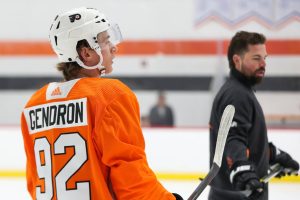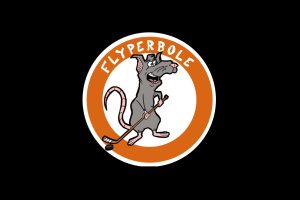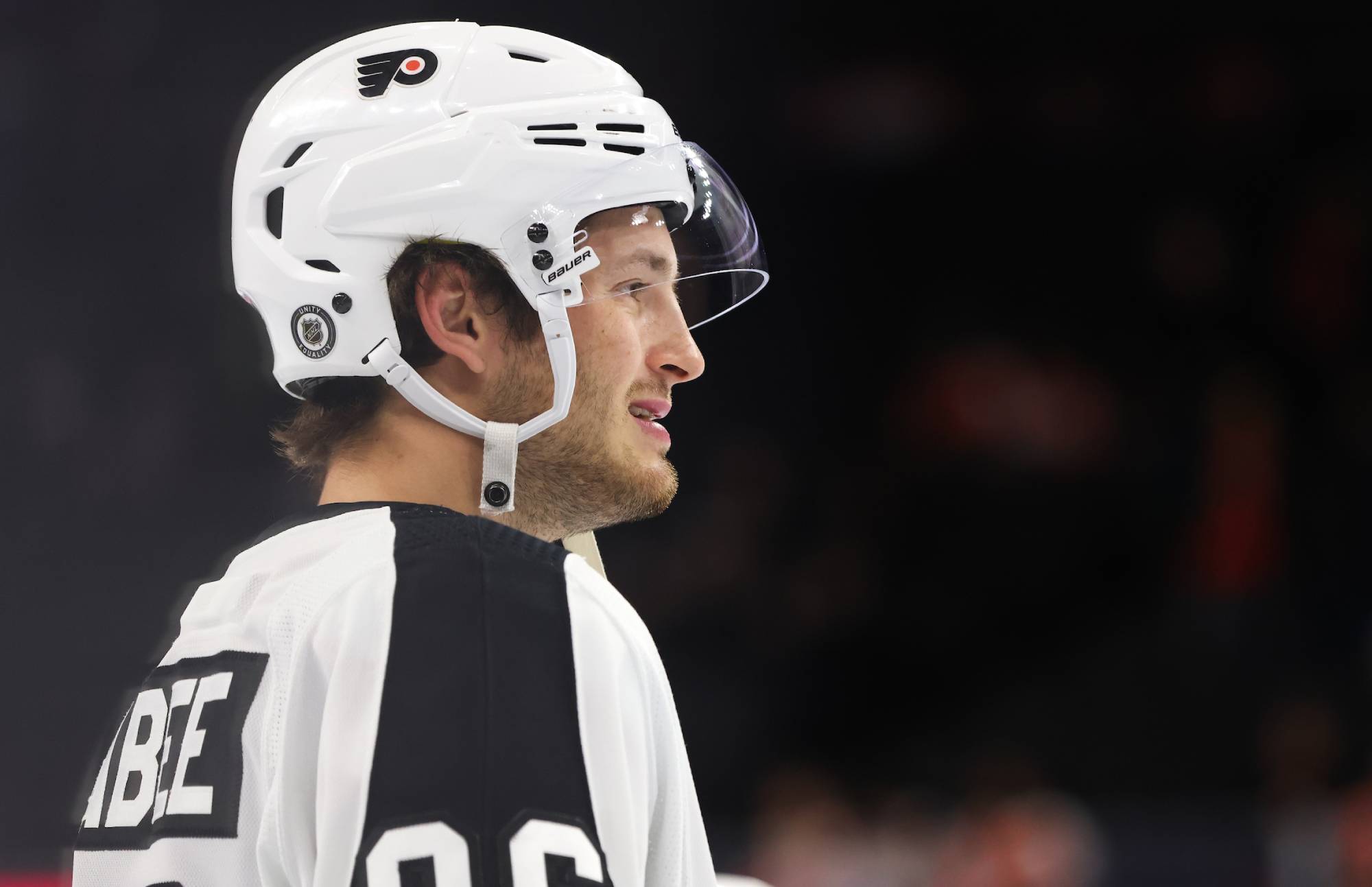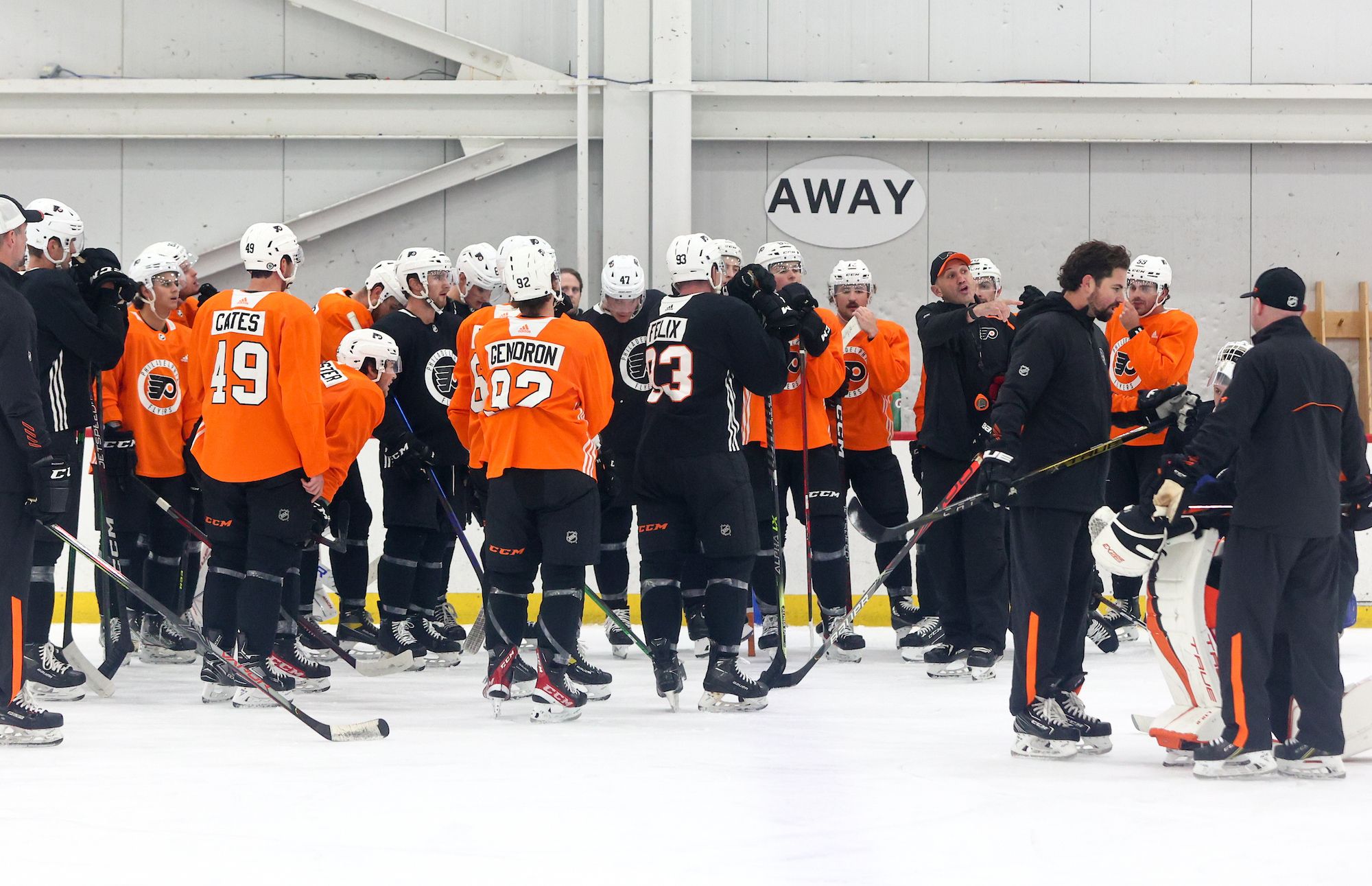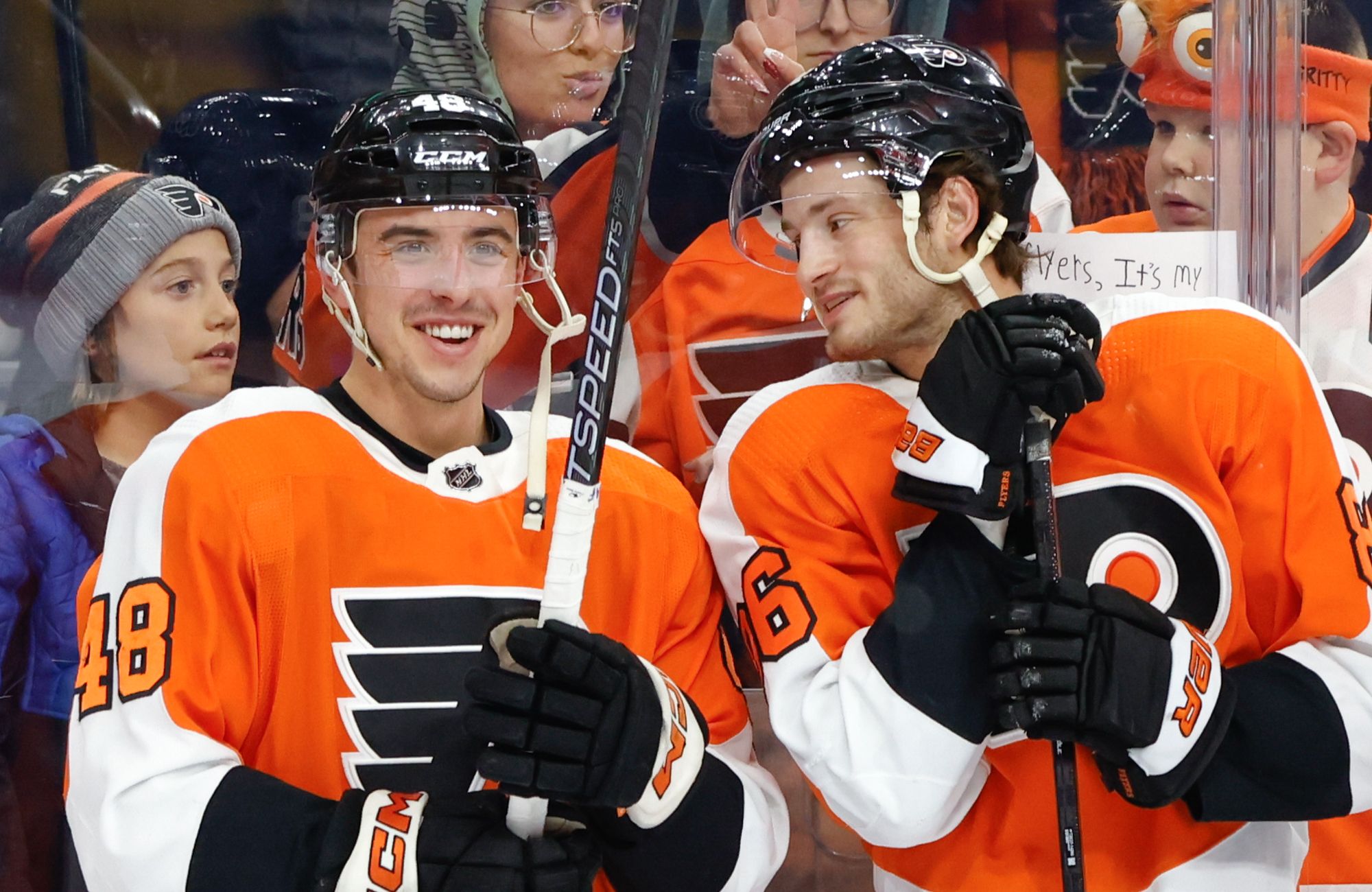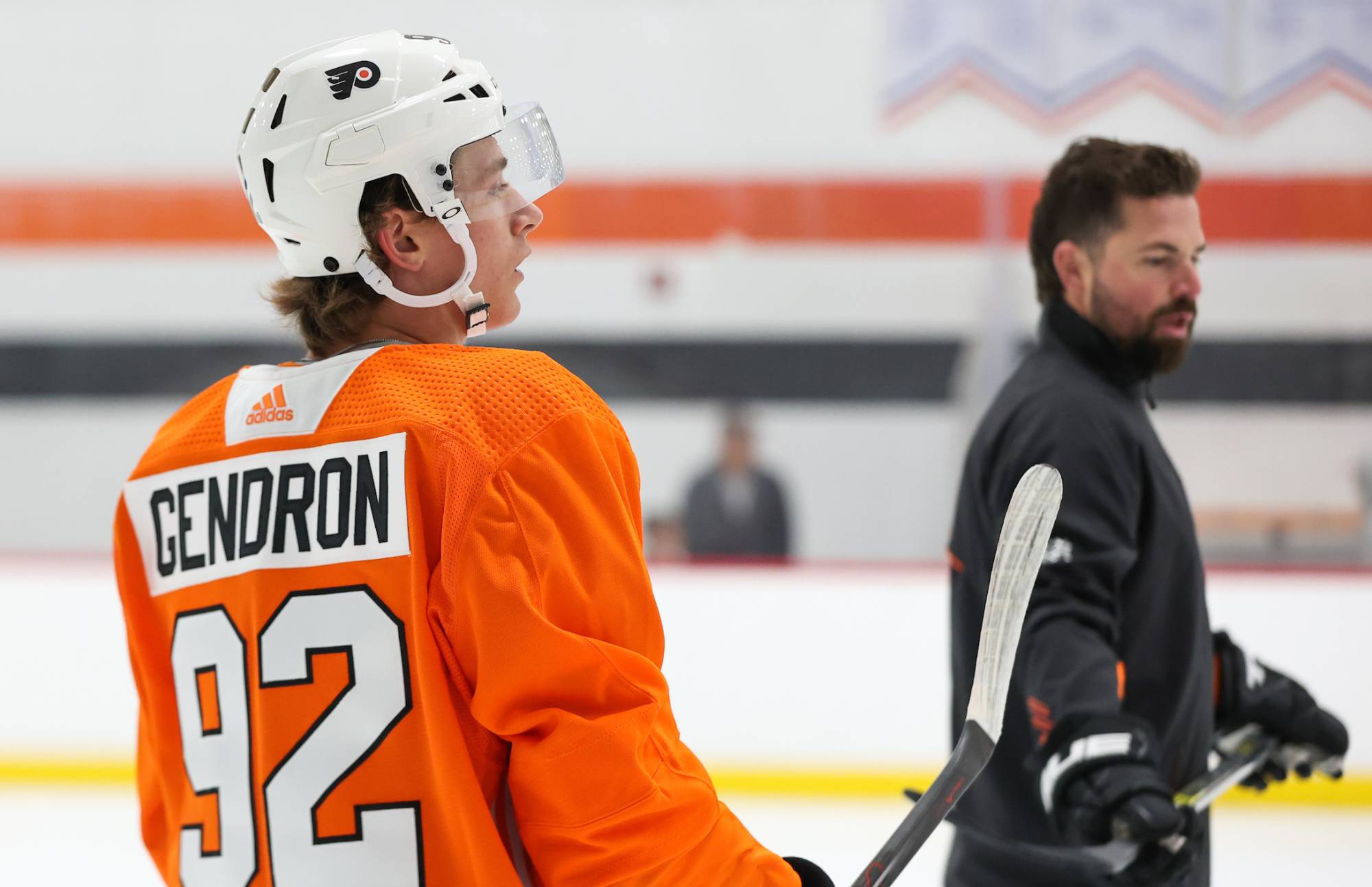Over the past month, the Philadelphia Flyers have performed like a true contender. Their 8-2-2 record has kept them in the thick of the playoff race, and the team’s underlying even strength metrics have gone through the roof at the same time. It’s been the rare run from a previously-mediocre club that doesn’t seem to be a fluke at all.
Yesterday, we delved into the numbers and determined that for the first time all season, Philadelphia’s play in all three zones has been above-average, leading to the dramatic improvement in even strength performance. But while that helps to explain the general reason for the Flyers’ uptick in results, it doesn’t tell us which players and combinations have truly been driving the team’s resurgence.
Luckily, Philadelphia’s line combinations and defensive pairings have mostly been stable, primarily due to the fact that coaches rarely make major adjustments when a team is playing well. As a result, we can utilize the Super WOWY — which stands for “With Or Without You” and shows us how players perform with and away from certain teammates — functionality at Puckalytics.com to determine which lines and pairings truly have performed best for the Flyers since February 14th.
Forward Lines and Observations
| Line | 5v5 Time on Ice | Corsi For/60 | Corsi Against/60 | Corsi For Percentage | Goals For/60 | Goals Against/60 | Goals For Percentage | On-Ice Shooting Percentage | On-Ice Save Percentage | Defensive Zone Faceoffs | Offensive Zone Faceoffs | O-Zone Faceoff Percentage |
| 1st Line: Schenn-Giroux-Simmonds | 101:05 | 68.85 | 57.58 | 54.5% | 3.56 | 2.37 | 60.0% | 9.09% | 92.16% | 37 | 52 | 58.4% |
| 2nd Line: Raffl-Couturier-Gagner | 73:16 | 55.69 | 55.69 | 50.0% | 3.28 | 4.09 | 44.4% | 12.90% | 86.11% | 20 | 21 | 51.2% |
| 3rd Line: Laughton-Cousins-Read | 68:43 | 67.23 | 48.9 | 57.9% | 2.62 | 0.00 | 100.0% | 8.33% | 100.00% | 9 | 27 | 75.0% |
| 4th Line: VandeVelde-Bellemare-White | 101:31 | 53.19 | 55.56 | 48.9% | 1.18 | 2.36 | 33.3% | 5.26% | 90.7% | 28 | 35 | 55.6% |
- None of the four lines are really getting buried in terms of zone starts, because the Flyers are pushing the play in the right direction so often. Unsurprisingly, the shutdown line centered by Sean Couturier has received the most defensive zone faceoffs relative to offensive zone ones, but even they are above 50% in o-zone faceoff percentage. It’s much easier to minimize the impact of “tough” usage when the vast majority of faceoffs are occurring in the opponent’s end.
- The “don’t put Jakub Voracek back in the lineup because it will mess with chemistry!” argument holds even less water after looking at these metrics. In terms of shot attempt differential (Corsi) and goal differential, the second line of Couturier, Sam Gagner and Michael Raffl has been the worst of the regular “scoring” lines over the past month. They haven’t been bad by any means, but it’s clear that Couturier could use a possession-driving infusion of talent at wing to get his line to the next level. If only the Flyers had one of those nearly ready to return from injury. Hmmm.
- The third line may be getting sheltered, but the above metrics are still eye-popping. Over the past month, the Laughton-Cousins-Read combination has been the team’s best at driving possession, and has yet to be on the ice for even one goal against. BSH has noted on multiple occasions this season that the Flyers’ lack of scoring depth was forcing them to essentially roll two fourth lines, and was dragging down the team’s overall performance. No more. The call-up of Nick Cousins and the shift of Scott Laughton to the wing has created a legitimate scoring third line to supplement Giroux and Couturier’s units. That line’s emergence may be the biggest reason for Philadelphia’s improved even strength play.
- In early March, Kurt referenced research from Travis Yost of TSN regarding the league-average performance of fourth lines in the NHL. Yost found that players receiving fourth line ice time tend to deliver on-ice shot attempt differentials in the 47-48% range. Through most of the season, the line centered by Pierre-Edouard Bellemare has been far below that target, but that’s changed over the past month. The Flyers’ fourth line isn’t dominating, but they are posting results superior to their league counterparts. Their trend towards puck possession respectability shouldn’t be ignored.
Defense Pairings and Observations
| Pairing | 5v5 Time on Ice | Corsi For/60 | Corsi Against/60 | Corsi For Percentage | Goals For/60 | Goals Against/60 | Goals For Percentage | On-Ice Shooting Percentage | On-Ice Save Percentage | Defensive Zone Faceoffs | Offensive Zone Faceoffs | O-Zone Faceoff Percentage |
| 1st Pair: Schultz-Streit | 163:33 | 60.90 | 48.43 | 55.7% | 1.83 | 1.10 | 62.5% | 5.43% | 95.52% | 68 | 62 | 47.4% |
| 2nd Pair: MacDonald-Gostisbehere | 160:22 | 55.37 | 55.00 | 50.2% | 2.24 | 1.87 | 54.5% | 9.38% | 91.80% | 31 | 47 | 60.3% |
| 3rd Pair A: Manning-Gudas | 95:05 | 71.94 | 50.48 | 58.8% | 3.79 | 1.89 | 66.7% | 10.17% | 93.33% | 16 | 39 | 70.9% |
| 3rd Pair B: Medvedev-Gudas | 64:45 | 72.28 | 44.48 | 61.9% | 3.71 | 2.78 | 57.1% | 12.90% | 87.5% | 14 | 19 | 57.6% |
- Back in 2014, I wrote an article showing that the performance of the then-second pair of Mark Streit and Nicklas Grossmann had been a major contributing factor to the Flyers’ strong second half performance and resulting playoff run. Two years later, it’s happening all over again for Streit, just with a different defensive-minded veteran as his partner. The Streit-Schultz pairing has been undeniably effective in recent weeks, particularly in shot and goal suppression. The tandem is Dave Hakstol’s clear choice to take defensive zone faceoffs, and as their strong 55.7% Corsi For percentage shows, they’re pushing play in the right direction as well.
- Some have posited the theory that the re-insertion of Andrew MacDonald into the Flyers’ lineup has contributed to the team’s surge over the past month. After all, his call-up almost perfectly correlates with the team’s uptick in even strength metrics. Unfortunately, the easy narrative doesn’t appear to be the correct one. The MacDonald-Gostisbehere pairing has been the team’s weakest from a shot attempt differential standpoint ever since being constituted after the Del Zotto injury. They’re still above 50%, so MacDonald’s presence is far from killing the team, but relative to his teammates, he has not been an above-average defenseman. Via the eye test, Gostisbehere appears to be the possession driver on the line, and he’s essentially been lifting MacDonald to the point where he hasn’t been an obvious liability. Ghost’s relative Corsi metrics have taken a big hit recently, though, which will probably hurt his Calder candidacy with the advanced stat-types. But helping MacDonald to an above-50% Corsi has been an on-ice boon to the Flyers, and a big reason why they’ve survived the loss of Del Zotto.
- Radko Gudas rightfully received lots of criticism in the weeks after the all-star break. Not only was his aggressiveness way out of control, his play with the puck on his stick had obviously regressed. But Gudas has rebounded nicely, and is playing strong hockey regardless of whether he’s paired with Brandon Manning or Evgeny Medvedev. The third pair has essentially been the offense-first pairing, leading the team in both on-ice shot attempts and goals for per sixty. Medvedev has plus offensive instincts, so it’s not surprising that Gudas has been able to complement him. But the fact that no dropoff exists when Gudas is given Manning as his partner leads me to believe that Gudas is actively driving play for the Flyers. He’s been one of the unsung heroes of the team’s surge over the past month.
Conclusion
Unsurprisingly, there have been numerous players who have stepped up their games during Philadelphia’s stellar recent stretch. Stars like Claude Giroux are certainly doing their part, but the high-end roster players really have been contributing since the start of the year. It’s been a dramatic improvement in the performance of the depth players that has pushed the Flyers to new heights.
At forward, it’s been the emergence of the third line of Scott Laughton, Nick Cousins and Matt Read that has made the biggest impact, especially accounting for the poor play of the hodgepodge assortment of players tasked with that role in the first half of the season. In addition, the jump of the Bellemare line to even strength respectability has removed a key weakness of the roster.
Defensively, the pairing of Nick Schultz and Mark Streit has went from being a liability at 5-on-5 to a legitimate strength. Streit’s return to full health has surely been a contributing factor, but both veterans are also simply playing smarter, more effective hockey. Radko Gudas has also rebounded from a rough stretch in early February marred by turnovers and brainless hits to become one of the team’s best defensemen.
In addition, two myths can be dispelled. First, there should be no concerns that the return of Jakub Voracek could disrupt the current line combinations. In fact, the second line (Voracek’s likely spot once his returns) has only performed at a break-even puck possession level. They could certainly use a play-driving winger to elevate their results, and Voracek fits the bill perfectly. Second, the addition of Andrew MacDonald to the lineup has not been a driving force behind the team’s improved play, as his pairing has been the team’s worst over the past month. It’s more accurate to say that he hasn’t been a liability than a true strength of the roster.
On the whole, however, even the “weaknesses” of the roster have performed at an acceptable level over the past month. It’s going to be up to everyone in the lineup, from Claude Giroux down to Chris VandeVelde, to keep this up and continue the team’s playoff push.



